Making a Woodcut
While planning the print, decide on final size and orientation up front as the final paper print will be defined by this. Some printmakers work directly on the wood surface to create the composition, adding lines as they go as a way to guide them with carving and cutting. They then refine the marks with chisels and other carving tools. Some printmakers will work out a well defined design on paper or digital format and then transfer it to the block using a variety of methods. In the transfer, the image must be mirrored horizontally so the final print once again becomes right reading.
Lines that are drawn either by hand tools or digitally may or may not translate to what the printmaker can do with a chisel or knife. While this could be an area of frustration, it's better to accept it and see it as the language of the woodcut. In my experience, the inked chisel marks took a shape I would not have thought to do in pencil.
The block, or woodcut matrix substrate should be selected for uniform grain, flatness, lack of knots and blemishes and of a thickness suited to how the printmaker will work as they progress through the carving stage to the final printing process. Plywood sheets bought from big box stores are of lower quality with every passing year. The surface may be good but the underlying laminated layer may have voids, grain deformities or even epoxy fills. Always a surprise when heavily committed to a carving. While most problems can be worked through, it's better to avoid them.
Once the image is on the block, carving and cutting can start. Large areas can be blocked in by establishing cuts with a sharp knife or gouge. All areas that will be white are carved away. The ink surface is left as is much like a rubber stamp.
As progress takes shape, many printmakers will do a proof print to check progress and determine where more attention should be paid. It's easier to look at the image reversed back to its original orientation and not in the negative. Once the block is refined and stray high spots are removed, it's time to prepare for inking the matrix and printing.
Ink is prepared on a smooth surface and worked with palette knives and the brayer itself, then the ink is rolled out onto the surface of the block. There are two distinct paths that can be taken at this point; some form of press to apply pressure or hand burnishing using a barren. Both methods lead to a similar final print. In 2000 years of wood block printing only the last 300 of them made the press available.
The first print will be disappointing. The printmaker runs a series of impressions to look for problem areas, high spots and inking issues. Once addressed, or accepted, with the ink at the desired viscosity, it is time to run on the chosen paper.
While all printmakers are fundamentally experimental, there are guidelines for making an edition that most printmakers will follow, you can't break every rule? An edition is a set of identical prints made from the matrix. An open edition allows the printmaker to return to the matrix later and make more prints. A limited edition does not. The final number of the edition is decided on before the printing begins and each print is clearly labelled below the image and to the left. The number will display the place in the edition of the specific print followed by the final number of the edition. A print labelled 44/250 is the 44th print from a limited edition of 250 identical prints. There are some allowances for proof prints and artist retains prior to the edition and they are marked accordingly. Once the final edition number is reached, the block will not be used again unless major changes are made.
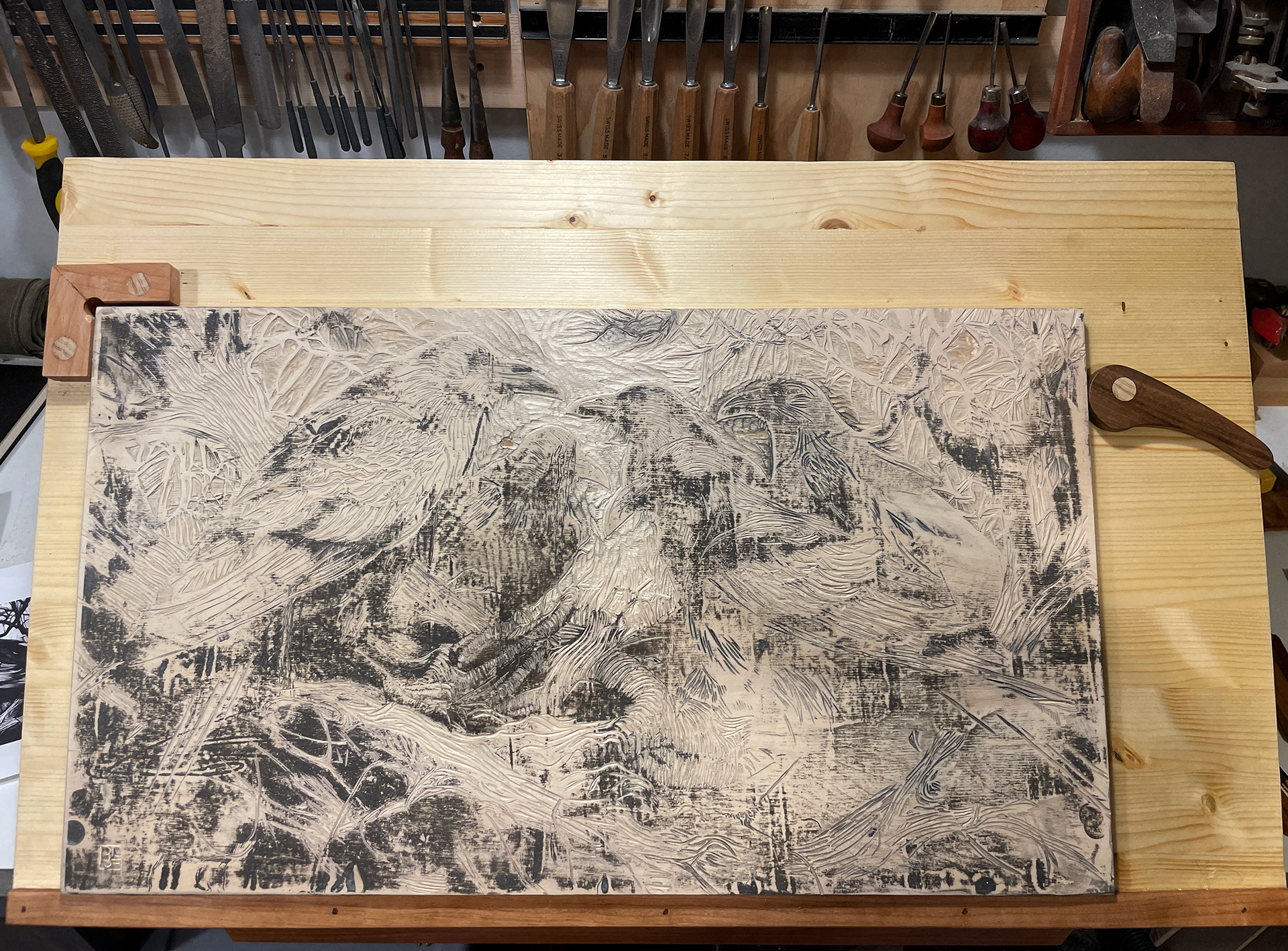
The Crows in progress on carving table

Detail of carving
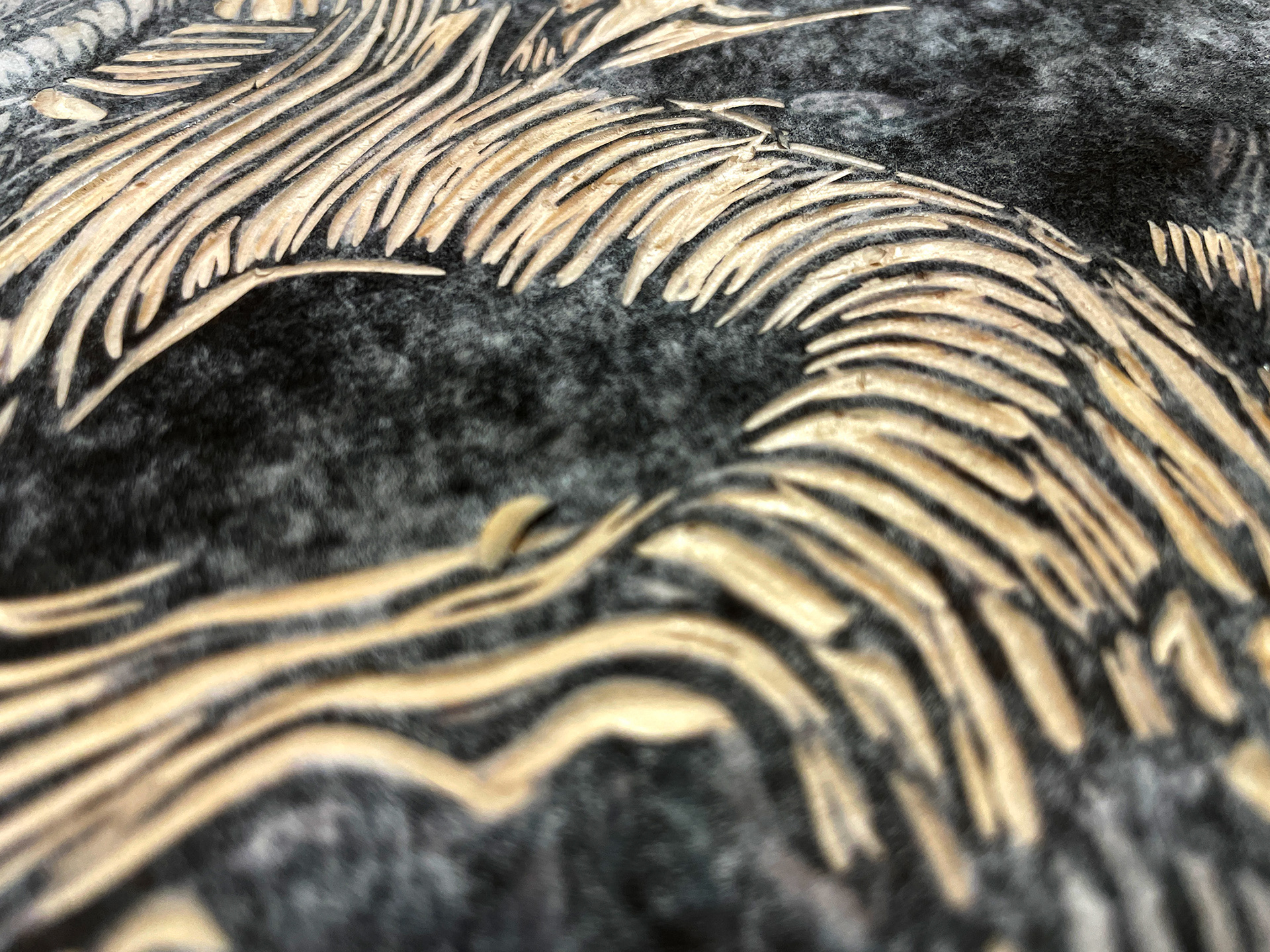
carving The Crows, removing white areas of drawing
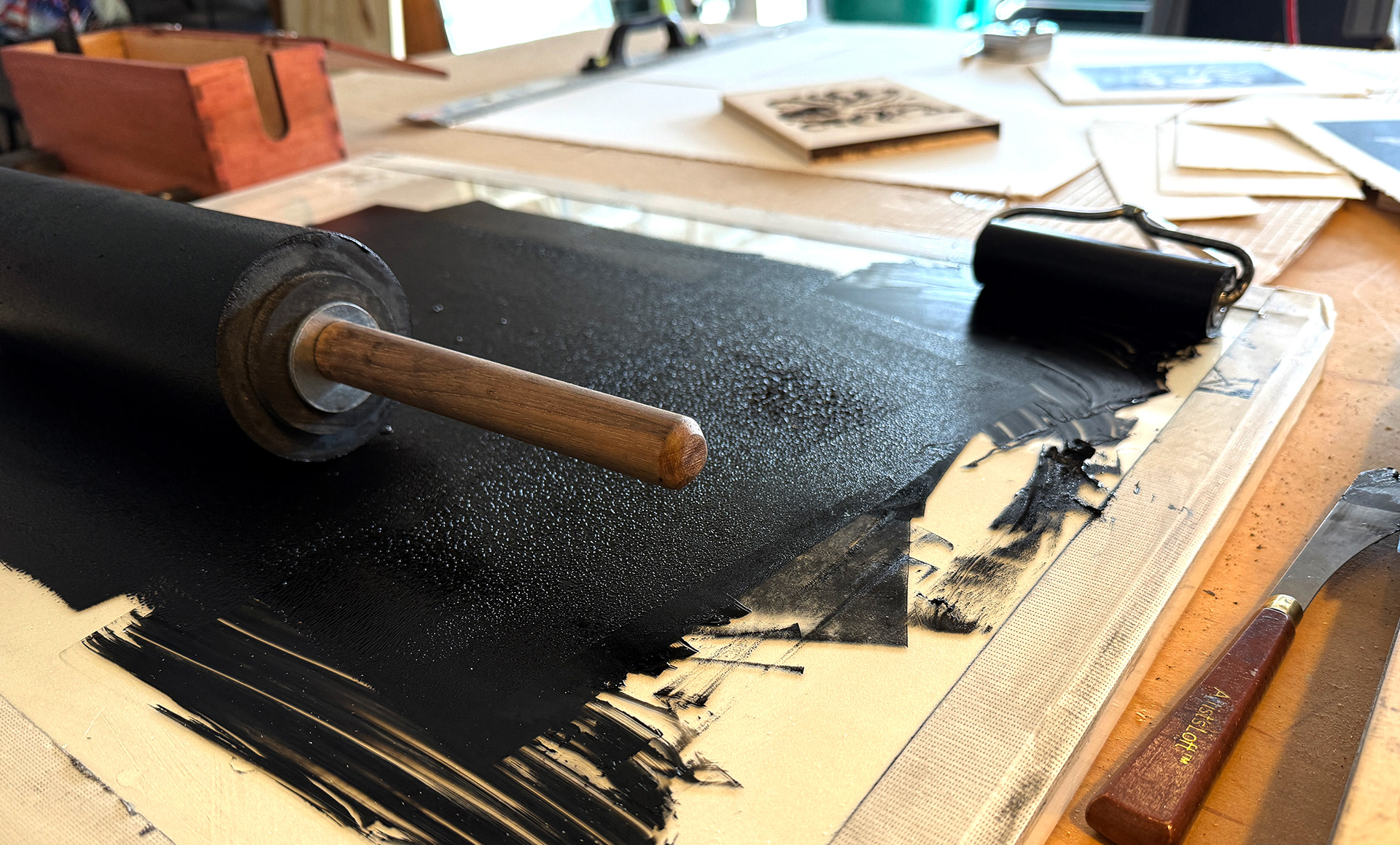
Preparing ink to print The Crows
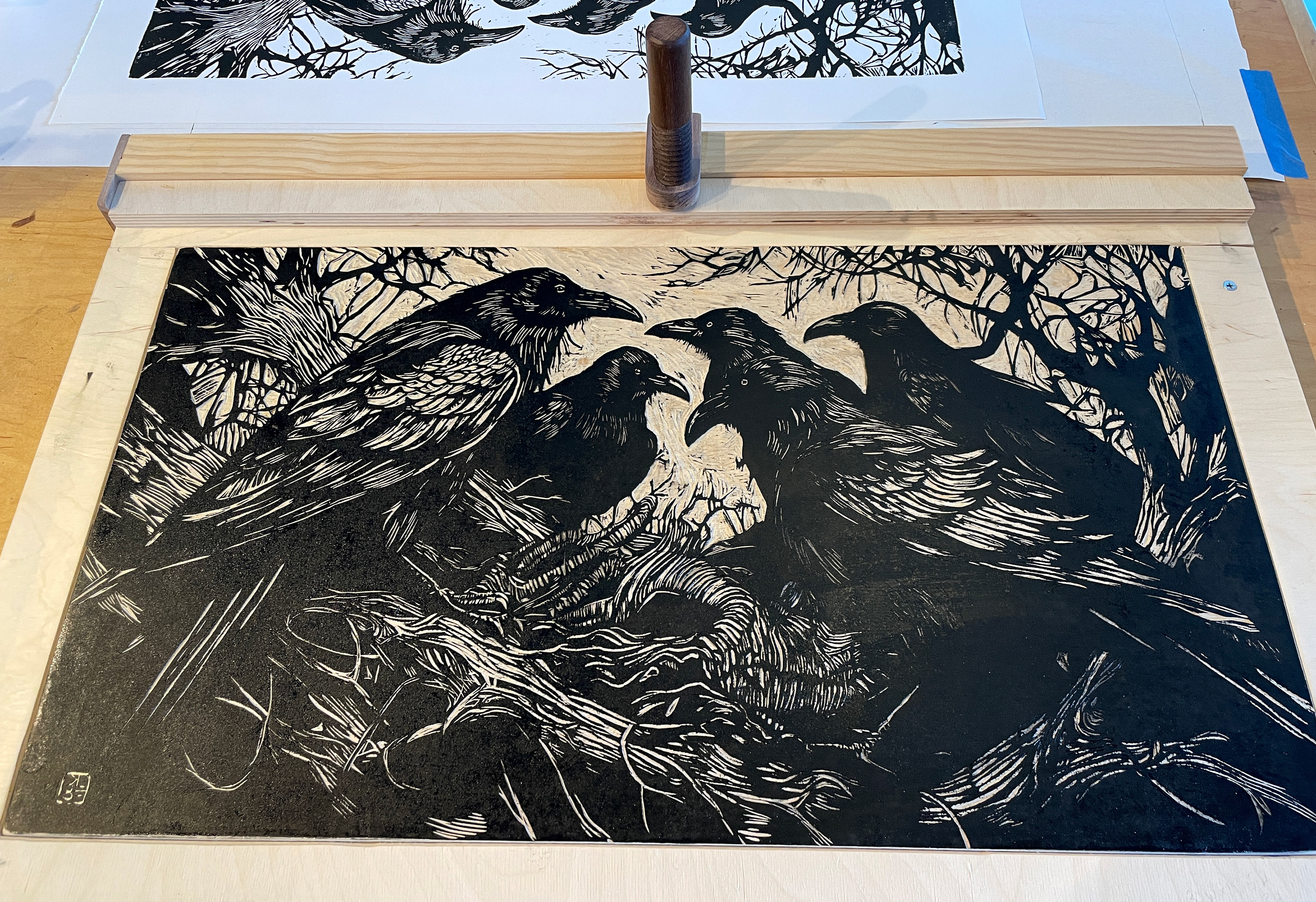
Inked matrix, The Crows

Disappointing first proof
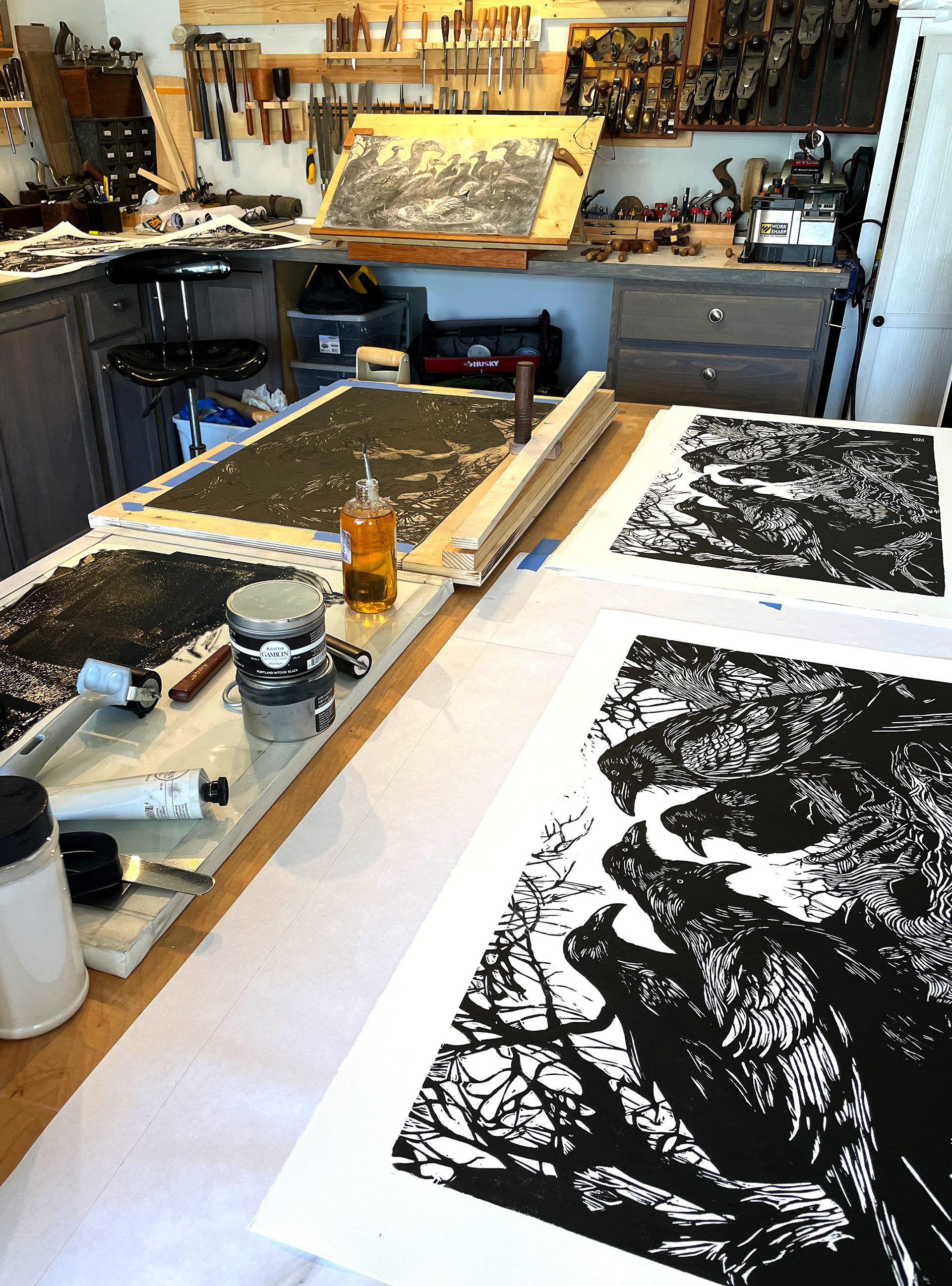
Ink is close to ready
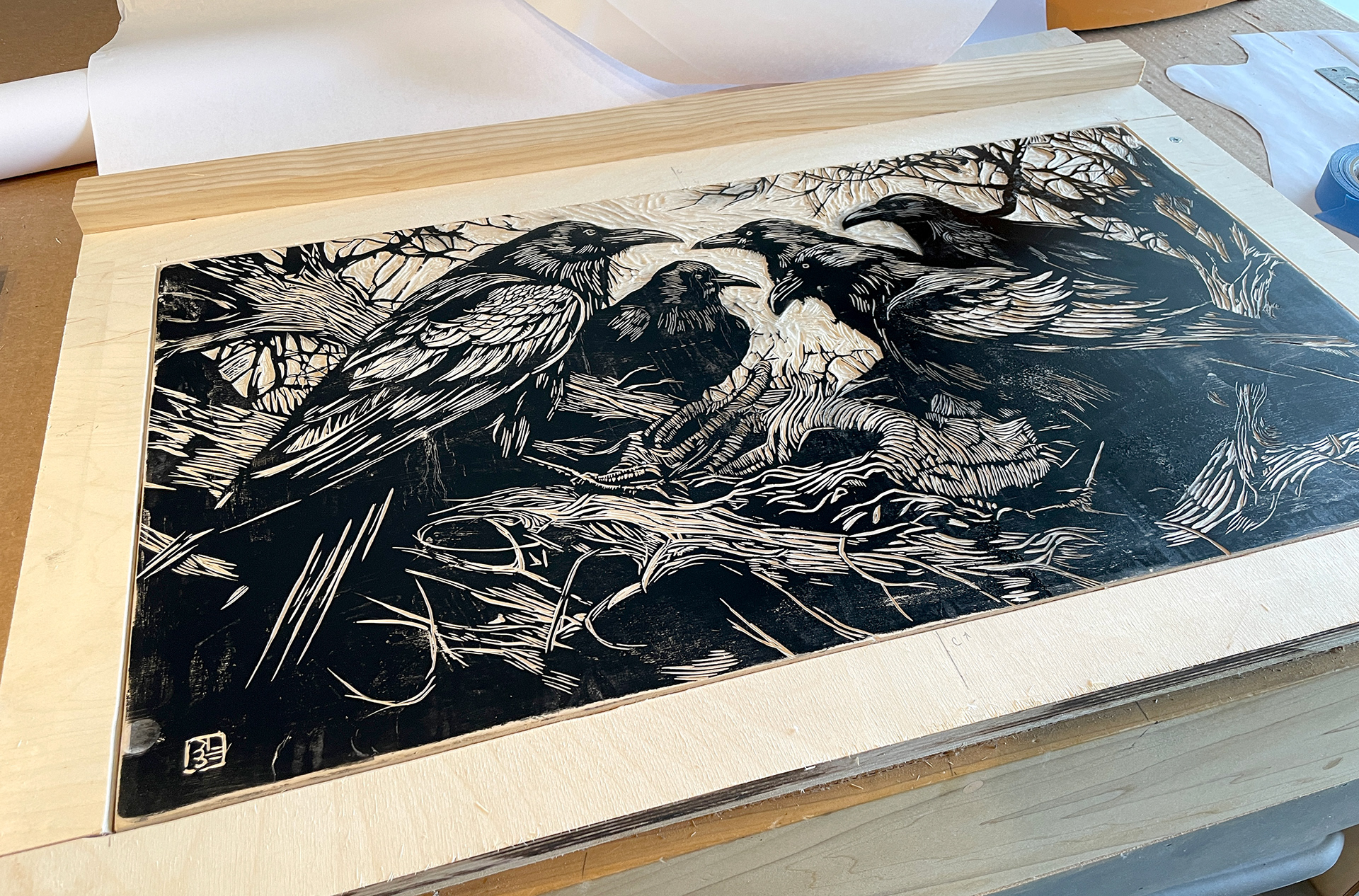
An early print, ready to start run

Run underway, using a barren and hand pressure

Printing continues
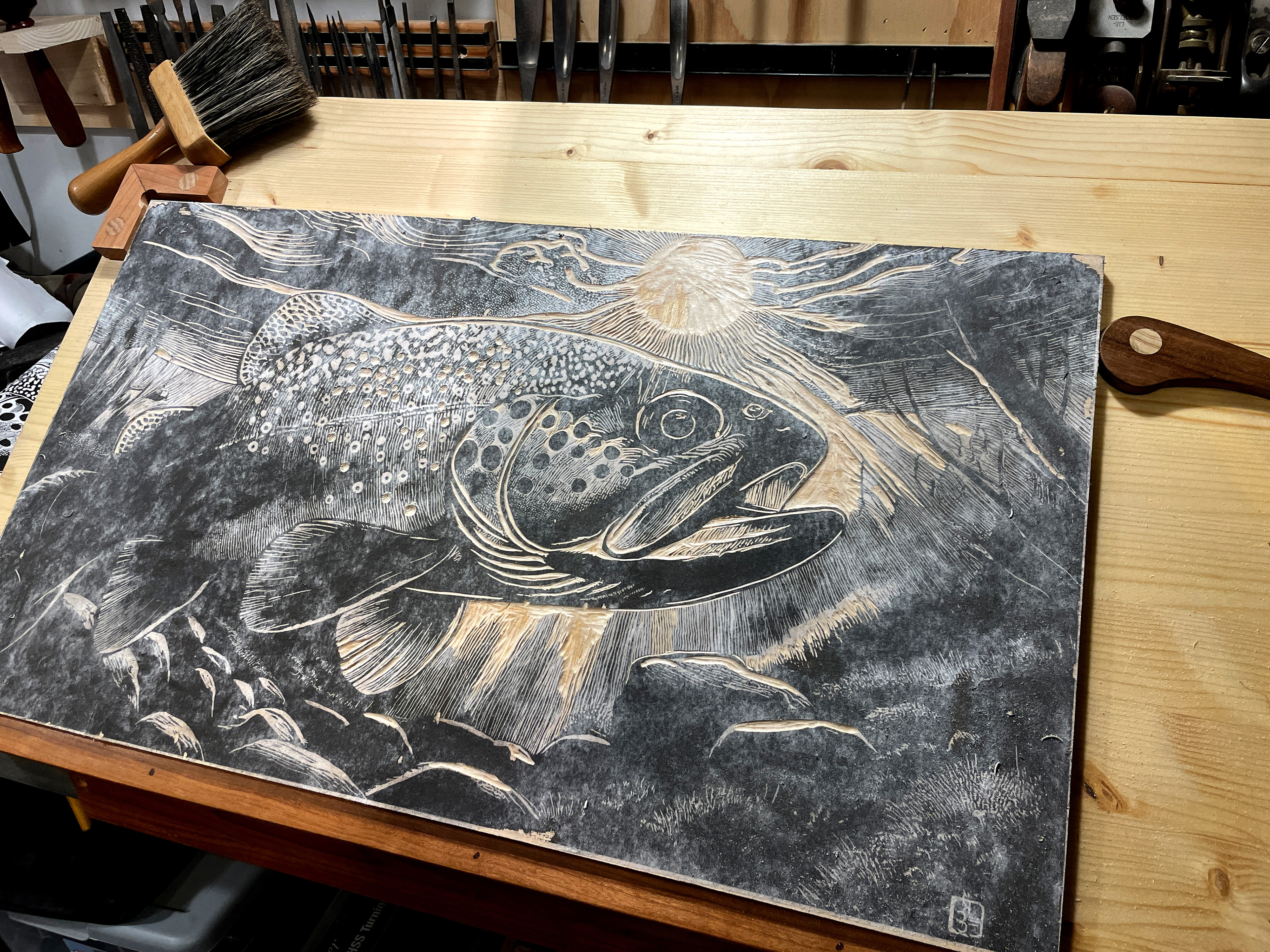
Trout on the carving table, the black is from the paper design glued to the block
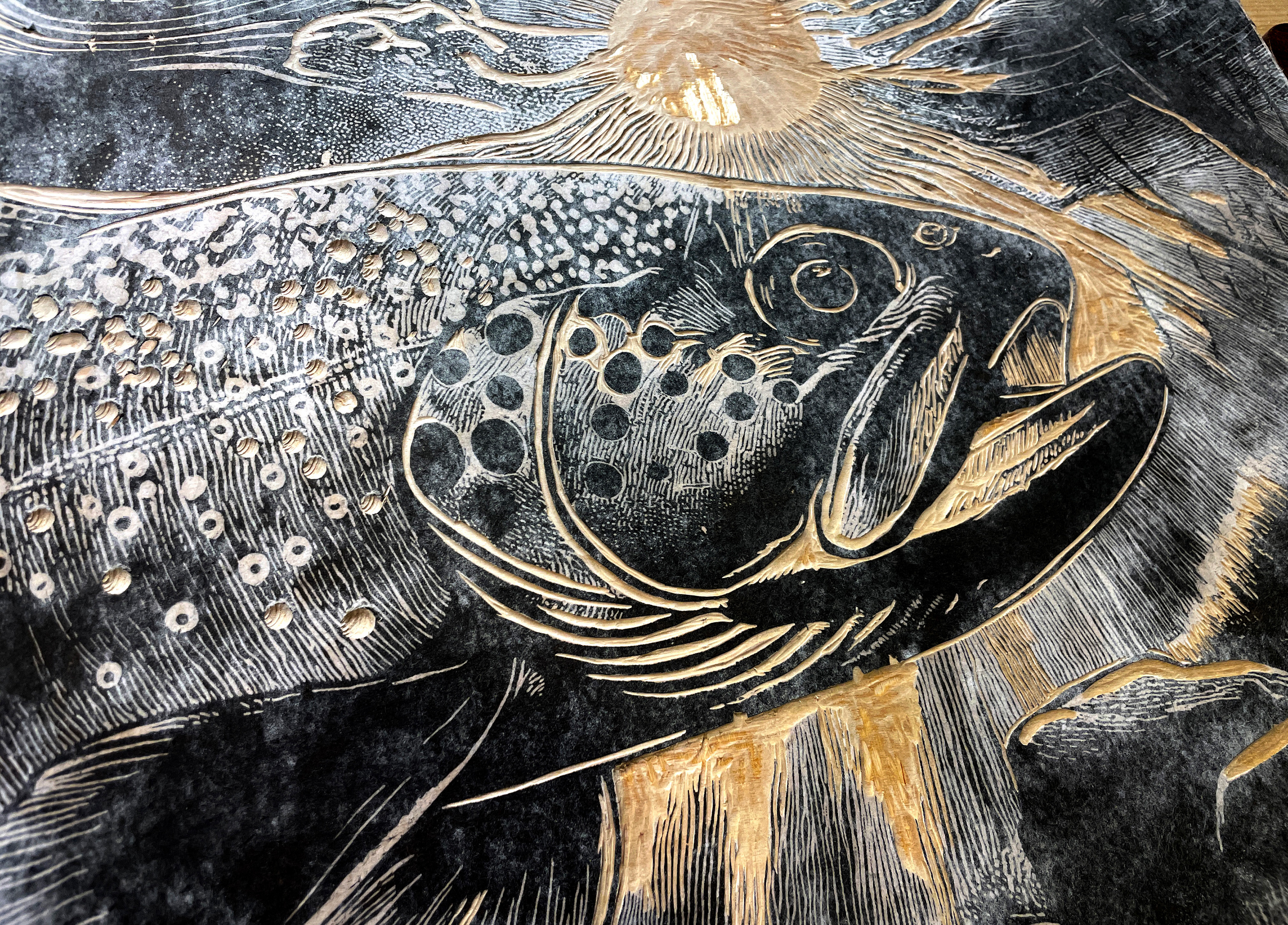
Close-up of The Trout
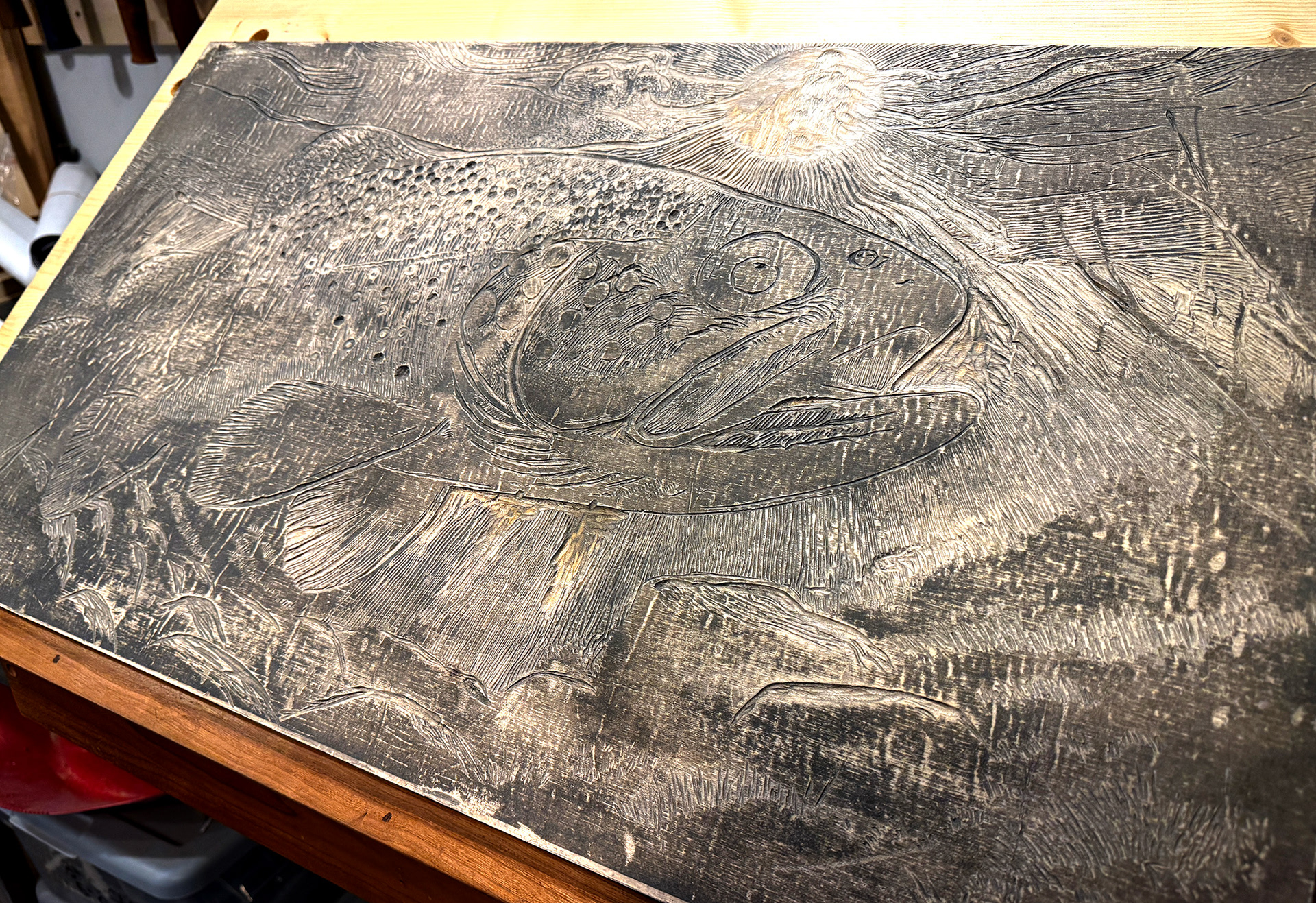
Carved block for the Trout, lightly sanded and ready to ink

